The World’s Greatest Detective
Coming out of the incredible James Gunn’s Superman over the weekend, I wanted to dive back into the world of DC comics. I’ve always preferred Marvel over DC, mostly due to childhood exposure through Saturday morning cartoons (X-Men and Spider-Man). But I’m not one to entrench myself in one nerd camp over another—I’m a lover of all comics. I thought this was the perfect time to pull one of my graphic novels off the shelf and engross myself in Gotham. Pair that with a game that’s been sitting on my shelf of shame for a year, and the opportunity just presented itself.

Batman: The Dark Knight Returns – The Board Game is a 1-2 player narrative-driven legacy game split into four books, designed by Daryl Andrews and Morgan Dontanville. Much like real life, each book plays out the plot of one of the four graphic novels from Frank Miller’s acclaimed 1986 series. You’ll follow Batman’s footsteps to uncover clues about the scheme at hand, culminating in a final showdown with a boss (I also played Hans Zimmer’s scores from the Christopher Nolan trilogy for full immersion). As with most legacy-style games, components like board state, upgrades, cards, and more carry over from book to book. The artwork is fantastic because, well, it’s literally the panels from the comic books, brought to life by talented artist Arnaud Boudoiron.
This adaptation fits in the family of other adaptations such as Batman: Everybody Lies, The Batman Who Laughs Rising, and The Arkham Asylum Files: Panic in Gotham City.
I Am Vengeance
I’ll keep the majority of the game spoiler-free (which also doubles as spoiler-free for the comic), so I’ll reference core aspects from the first/intro book. Playing as Batman and his ally, Commissioner Gordon, you’re tasked with identifying the whereabouts of Two-Face, who’s running amok in Gotham. Batman loses if any of his three stat tracks reach zero, the Doomsday Clock hits twelve, or the GCPD tracker reaches the end of the track (twelve turns).
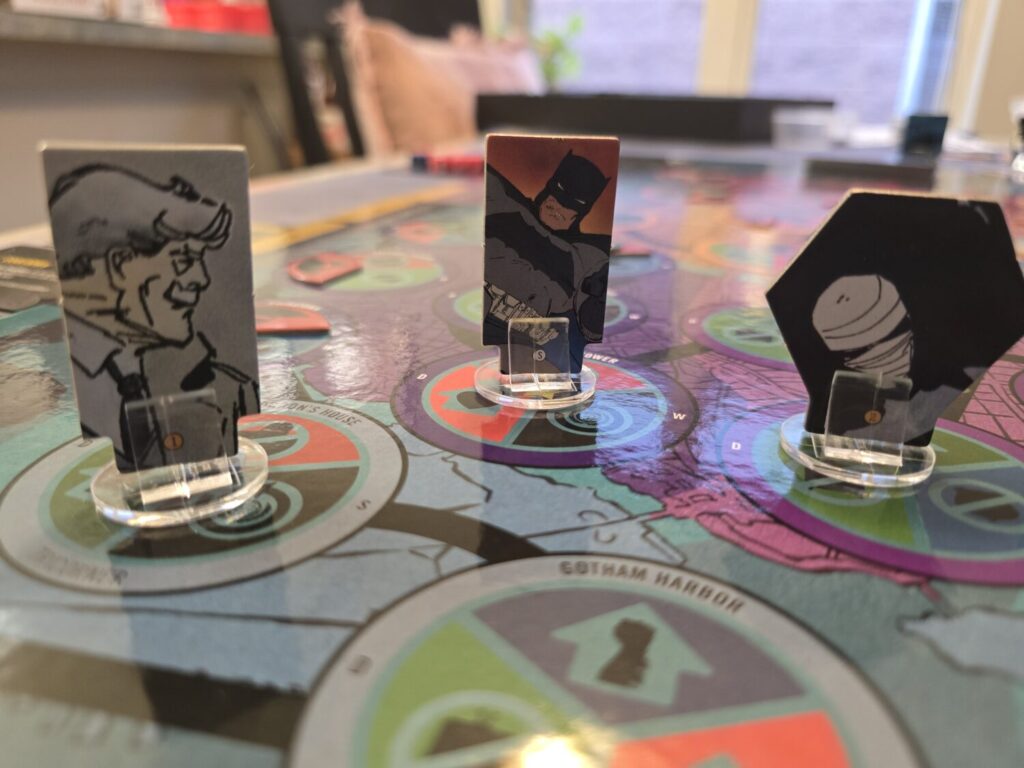
Within these timers, the turn structure is straightforward. You start by moving Batman to an action space. Gotham is split into three areas, with each area having multiple districts. Batman can move freely within a district but must stop upon entering a new one. Afterward, one ally can move and be activated. Batman then fights if he’s on an action space with an adversary (cops or mutants). Combat consists of die rolls using custom batarang dice, where faces equate to hits, blocks, or rams (hits while taking damage). Fights continue until the adversary’s dice are removed or the players choose to stop.
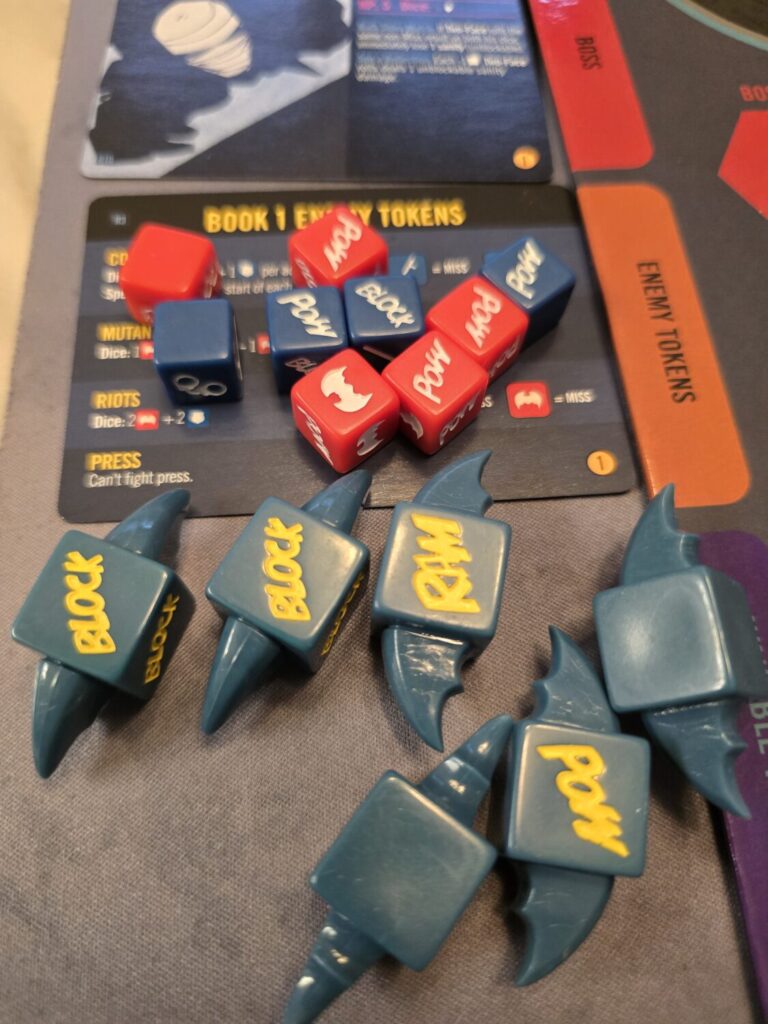
After combat, Batman activates the action space, which can include healing, rewinding the Doomsday Clock, or removing an adversary type from anywhere on the board. Batman also needs to discover clue tokens—dispersed throughout the city—to advance the plot. Players have both scenario-specific and base cards to assist in the caped crusade.
Turns end with adversaries seeding the board, and after every four rounds, the Doomsday Clock advances. At this point, Batman can use a dry-erase marker to create a new path between two locations. He also has access to high-tech vehicles unlocked by visiting Wayne Manor. Additional goal cards unlock even more tech by completing specific tasks. As new books are explored, the board state remains, but upgrades, allies, and cards carry over. Each book introduces new enemies, cards, challenges, allies, and other goodies.

Defender of Gotham
If you’re looking for a highly thematic Batman game, this is it—or at least one of them. Because the plot points and artwork are ripped straight from the source material, it feels like you’re playing through the panels of a comic book. It was an enjoyable romp through Gotham, and Frank Miller’s vision of familiar characters makes this a unique Batman experience. Each location, each villain, each twist in the story has that signature Miller tone—grizzled, moody, and stylized. If you’re a fan of the comic, the nostalgia hits hard, but even newcomers will appreciate the commitment to narrative and visual design.
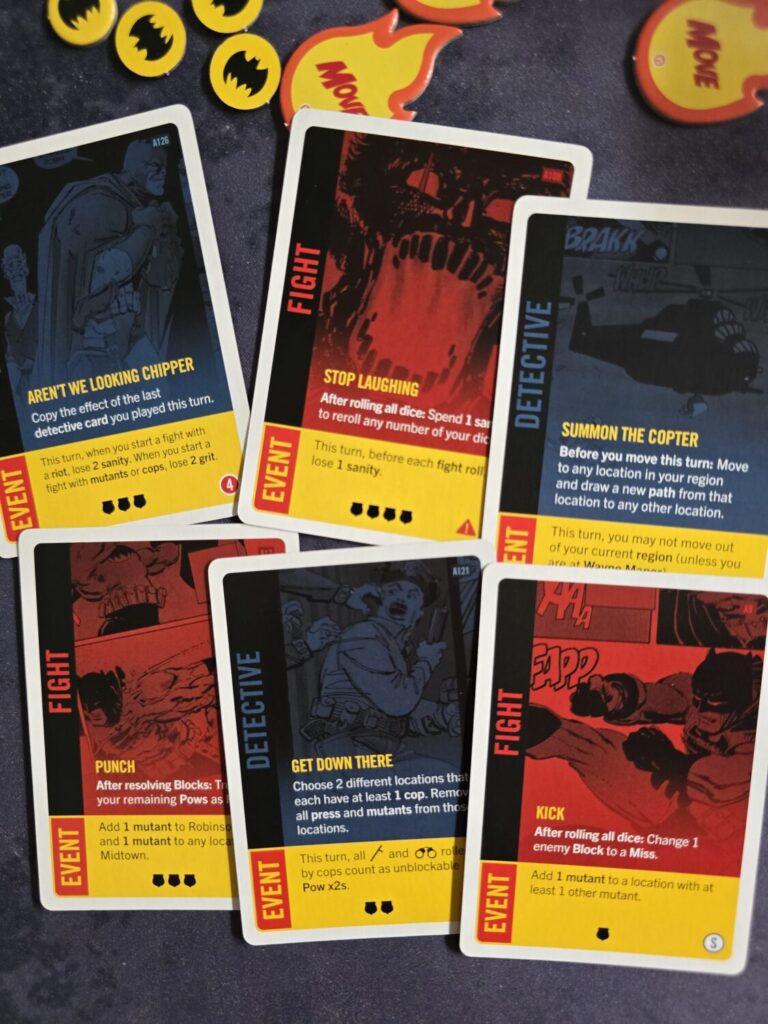
I also really appreciated the game’s simplicity, especially for a legacy-style campaign. Combat is resolved through straightforward dice rolling, and the included cheat sheet makes interpreting results a breeze. While there are a few combat modifiers to keep things spicy, the core mechanic remains largely unchanged throughout the campaign, which keeps it approachable. Dice-chucking can easily become tedious in other games, especially when loaded down with endless status effects, conditionals, or modifiers. But here, it’s tight, clean, and satisfying. You roll, you hit (or not), and you move on.

Having read the original comic series, I can say that the major story beats are hit with care. Sure, most of the subtlety and subtext is trimmed down (as it needs to be to function as a game), but the spirit is intact. The drama is there. The grit is there. You’ll recognize iconic panels and scenes, and they’ll hit even harder when you’re the one behind the cowl. I finished the entire campaign in one evening, with each book taking roughly an hour to an hour and a half. It’s quick and breezy—but the tradeoff is that it’s pretty simple. Move, go to a spot, find a thing, roll dice, repeat.
As you progress and unlock new gadgets and vehicles, the challenge curve doesn’t really ramp up—in fact, the game becomes noticeably easier. Between generous dice mitigation, overpowered gear, and a steady stream of cards, even what should be high-stakes encounters end up feeling manageable. Some might find that disappointing, especially if you’re used to punishing games like Gloomhaven, Oathsworn: Into the Deepwood, or The Elder Scrolls: Betrayal of the Second Era, where every move feels like it could be your last. Here, Batman always has a few more tricks up his sleeve, and the game rarely forces you to sweat too hard to win. It’s fun, sure—but if you’re craving tension and tight margins, you might not find it here.

The biggest mechanical threat comes when action spaces fill up and riots break out, escalating the danger and complicating movement and combat. But even those situations felt controllable. With the right combo of cards, riots could be quelled in a turn or two. There were moments where Gotham seemed on the brink—but Batman always had a Bat-gadget, a lucky roll, or a clutch ally to bring things back from the edge.
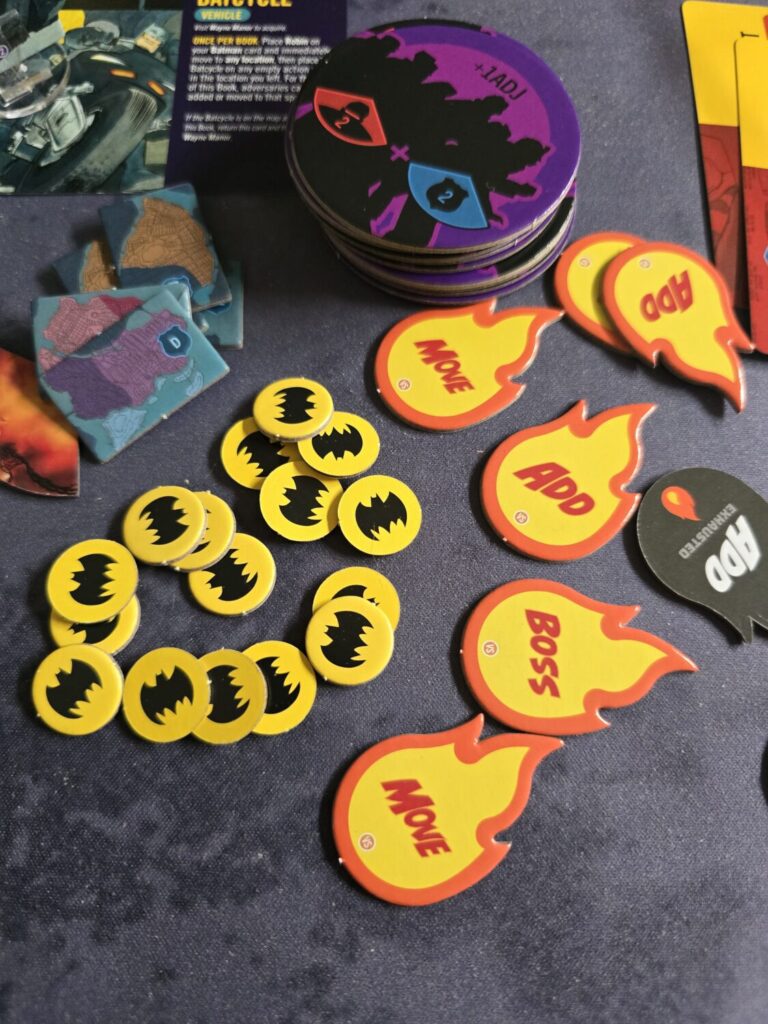
Matches Malone
That said, it’s still enjoyable and accessible. I imagine the mechanics are designed to draw in non-gamers who are fans of Batman or graphic novels. It still felt badass to be Bruce Wayne, slowly getting overpowered before unleashing an arsenal of tools on the baddies. The fun of discovering new allies and surprises in each book added some creative strategy to problem-solving.

I’m also a big fan of the dry-erase board. Drawing new routes and crossing things out felt like legacy-style gameplay without any actual destruction of components (ahem, Pandemic Legacy).
Overall, give this a shot if you’re a fan of comic books or just want a quick, accessible legacy-style game. The final boss fight is also a great twist, especially if you haven’t read the original series. That alone is worth diving into the chaos of Gotham.


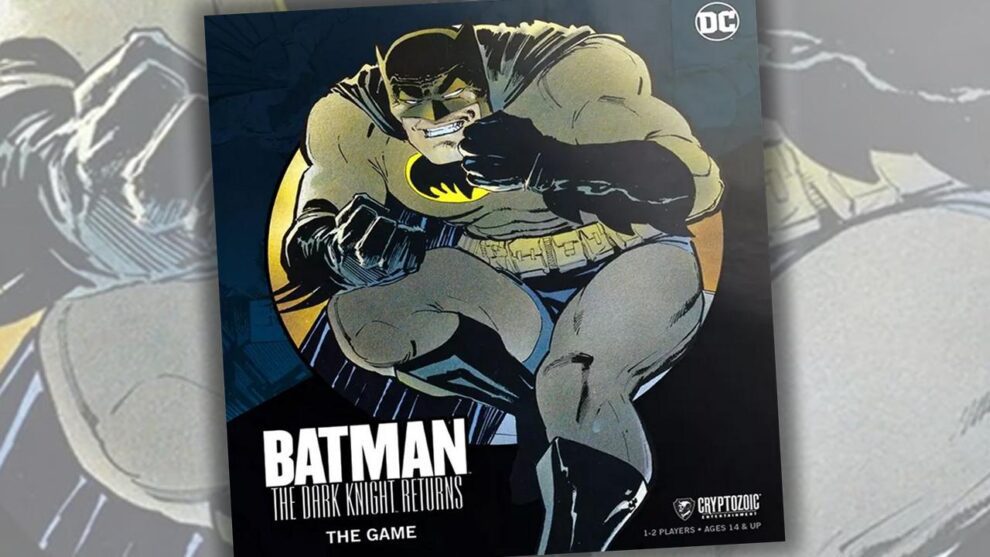







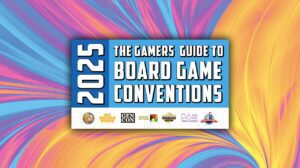

Add Comment